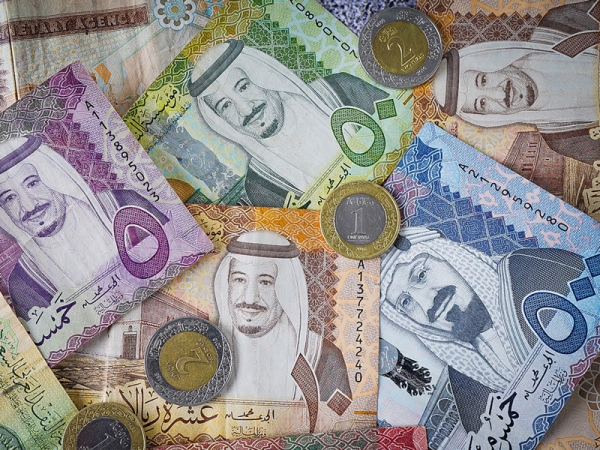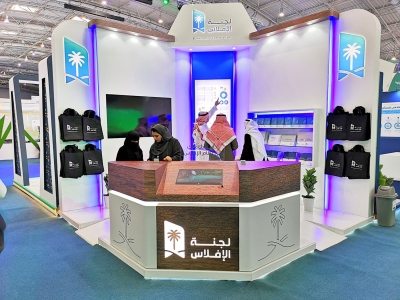

The Monetary Policy in the Kingdom of Saudi Arabia is one of the economic policies adopted by the Saudi Central Bank, aiming to achieve and consolidate financial stability and raise the level of economic growth by controlling the money supply through specific monetary tools.
Establishment of the first monetary law in the Kingdom
The Kingdom knew its first monetary law with the approval of the Founding King Abdulaziz Bin Abdulrahman Al Saud on the Hejazi-Najdi Monetary Law issued in January 1928. After that, the silver Arab riyal, which bore the name of the Kingdom, was minted in the size, weight, and caliber of the Indian silver rupee.
This process continued until the Saudi Arabian Monetary Authority (currently the Saudi Central Bank) was established by Royal Decree in 1952. The authority’s Articles of Association, consisting of twelve articles, was subsequently approved. Following this, the Saudi gold pound was adopted as the official currency of the Kingdom.
Three years later, a Royal Decree was issued in 1954 amending the law of the Saudi Arabian Monetary Authority (currently the Saudi Central Bank) - which was also amended in 1957 - to keep pace with developments in monetary movement and economic expansion.
Developmental phases of Saudi monetary policy
Over time, the characteristics of monetary policy evolved, leading to a Royal Decree in 1959 that established the Saudi riyal as the unit of Saudi currency. The riyal was subdivided into twenty Qirsh, and each Qirsh into five halalas. The riyal's value was set at 197/482 percent of a gram of pure gold. The exclusive right to mint and issue Saudi currency was granted solely to the Saudi Arabian Monetary Authority (now the Saudi Central Bank).
To control monetary policy, the money supply, and liquidity movement, the Saudi Arabian Monetary Authority (now the Saudi Central Bank) announced in 1961 that it would extend its supervision over commercial banks to ensure their operation on sound principles.
As a result of the balanced monetary policy performance, in 1964, the Governor of the Saudi Arabian Monetary Authority, King Faisal Bin Abdulaziz Al Saud, when he was Deputy to His Majesty the King, declared that the currency in circulation in the Kingdom had doubled compared to its circulation five years prior.
The development of the monetary system continued, enabling the Saudi Arabian Monetary Authority (now known as the Saudi Central Bank) to oversee cash management. In 1959, the Saudi Monetary Law was enacted alongside the introduction of official paper currency. Subsequently, the Banking Control Law was established in 1966, leading to a clearer and more effective monetary policy.
In response to the challenges of economic growth and to achieve the objectives of Saudi monetary policy, the exchange rate of the SAR against the USD has been pegged at SAR3.75 to USD1 since 1986. This has contributed to maintaining the stability of the SAR's exchange rate, which constitutes an intermediate goal for monetary policy in the Kingdom. The ultimate goal is to maintain the stability of local prices.
Monetary instruments applied by the Saudi Central Bank
Monetary policy is implemented through a variety of traditional and innovative monetary instruments adopted and applied by the central bank. These include reserve requirements on bank deposits, liquidity reserve ratios, deposit ceilings, precautionary restrictions on advances and loans, repurchase agreements on government bonds, treasury bills, and floating-rate bonds, as well as swap operations in the forward foreign exchange market.
According to the Saudi Central Bank Law issued by Royal Decree and Council of Ministers decision in 2020, Chapter One; Definitions and General Provisions, defines the functions of the Central Bank in Article Four, including setting and managing monetary policy and regulating the foreign exchange market.
The law also states in Chapter Three; Monetary Policy, Article seventeen, that the Bank is solely responsible for developing and implementing monetary policy. It is also responsible for selecting its operational instruments and procedures.
Until the end of the 1980s, the Saudi Central Bank continued to use traditional monetary instruments, such as ratios of statutory reserve requirements, to achieve monetary policy objectives. However, with the emergence of the government stock market, new instruments became available, including repurchase agreements, floating-yield bills, treasury bills, reverse repurchase agreements, foreign exchange swaps, and deposits.
The bank is also involved in directing monetary, financial, and structural policies in the Kingdom to achieve strategic objectives related to improving economic performance and safeguarding the economy from instability and fluctuations. Therefore, these policies aim to enhance the gross domestic product of the non-oil sector in the medium term, with the primary goal of promoting economic diversification under stable financial and monetary conditions.
Monetary policy transformations within Saudi Vision 2030
Saudi Vision 2030 has expanded the scope of monetary and fiscal policies to broader horizons, aiming to maximize local content to the fullest extent by localizing more than USD70 billion. In this regard, fiscal policy can play a significant role because Saudi monetary policy is influenced by the adoption of a fixed exchange rate system (pegging the SAR to the USD).
In an effort by the Saudi Central Bank to further tighten banking financial operations, it established a supervisory framework for banks and banks that practice Islamic banking activity in the Kingdom in 2020, by issuing a 'Sharia Governance Framework' aimed at setting a minimum standard for governance practices related to the practice of Islamic banking activity.
'Aber' initiative for digital currencies
In line with the experiences of central banks in several countries regarding the trading of digital currencies, the Saudi Central Bank and the Central Bank of the United Arab Emirates initiated the 'Aber' project. This innovative initiative is regarded as one of the pioneering global experiments among central banks in this domain. Its primary objective is to comprehend the prerequisites for issuing a digital currency that can be utilized in transactions between the two countries, while also furnishing an auxiliary avenue for the central transfer systems in both nations.
As part of its monitoring of monetary performance and in line with its role in activating monetary policy tools and enhancing financial stability, the Saudi Arabian Monetary Authority (now the Saudi Central Bank) prepared a financial program in 2020 during the outbreak of the COVID-19 pandemic. The program, valued at approximately SAR50 billion as of March of the same year, aimed at supporting the private sector and enabling it to contribute to economic growth.
Instant payment 'Sarie'
In support of the state's efforts to move toward a cashless society, the Saudi Central Bank launched the Instant Payment System with local banks. This system enables customers to make immediate and scheduled transfers among various banks in the Kingdom around the clock, even outside banks' working hours. Additionally, it provides enhanced flexibility for customers to include payment instructions details for the beneficiary.
In the same context, supporting the development of payment systems, the Saudi Central Bank has directed banks and payment services companies operating in the Kingdom to offer electronic payment methods for all retail sector activities. This directive aims to enhance electronic payment usage and reduce reliance on cash transactions.
Developing banking operations
As part of its efforts to enhance banking operations, the Saudi Central Bank updated the instructions and models for reporting assets and liabilities during the fourth quarter of 2020. Additionally, it introduced two standard forms for opening current bank accounts for both individuals and legal entities, aiming to streamline and regulate the account opening procedures. Furthermore, the Central Bank emphasized that banks should not hesitate to invoke the bank guarantee letter to initiate bankruptcy proceedings and suspend claims against customers who requested the issuance of the letter.
Related quizzes

